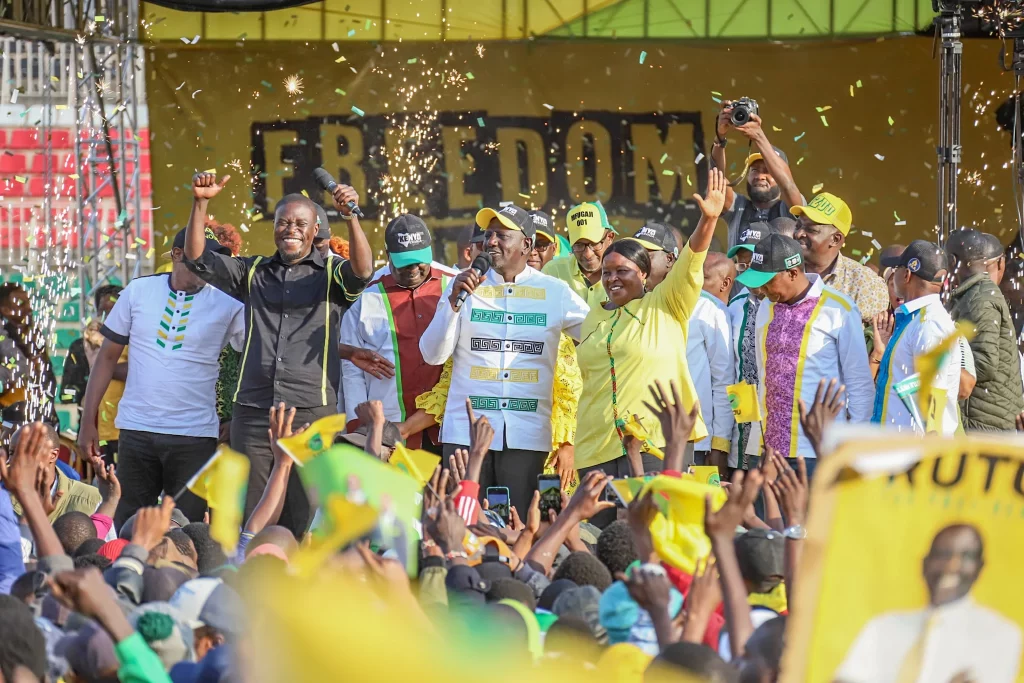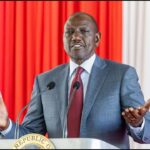The Kenya Kwanza Alliance was based on the Hustler narrative which is a bottom-up model of empowering the people while the Azimio One Kenya Party Coalition aimed at the Oneness Revolution of unifying the people to a common goal.
The Elections’ results that kept citizens burning the midnight oil just to keep up with the ongoing tallying of numbers were announced on August 15.
After a tumultuous evening of intense drama and prolonged anticipation at the IEBC headquarters in the Bomas of Kenya, William Ruto was declared President-elect of the republic of Kenya.
Azimio la Umoja One Kenya Coalition party’s contest against Kenya Kwanza Alliance for the country’s presidency, made the tallying process complicated, as the thin line separating the two contenders required more scrutiny to ascertain the winner.
Earlier, aside from the well-solved election issues like the misprints that were effectively dealt with, the voting process run smoothly on August 9, in a process expecting up to 22.1 million registered voters to turn up.
The results from polling stations to the tallying centres came out with a mix of amazement and surprise at how unexpectedly tight the race was and at how low the voter turnout was.
Thanks to IEBC making public the forms accessible, anyone could examine the numbers for themselves.
As the results trickled in the whole of Kenya kept watch, we call it ‘Kuwa Rada‘ which means to be constantly vigilant.
It was such that any individual could access the results and calculate who was leading by tallying the downloaded forms in the IEBC portal.
However, the official announcement had people waiting for Chebukati to officially declare Kenya’s next president via form 34C, which he did on August 15.
The results narrowed the presidential race to a slim margin between William Ruto of Kenya Kwanza and Raila Odinga of Azimio la Umoja, in number differences of thousands or hundreds.
Even though the race took swift unpredictable turns with each candidate holding out leads of about thousands on edge, Ruto was eventually declared the president-elect by IEBC chairman Wafula Chebukati.
It was a dramatic night that witnessed four out of the seven electoral commissioners walk out of Bomas disowning their chairman’s presidential declaration at the last minute, opting to even hold a parallel press conference of their own at Serena Hotel.
The four Justus Abonyo, Juliana Cherera, Irene Cherop, and Francis Wanderi differed in the opinion of Chebukati to declare the results.
Citing the fact that they are four commissioners out of the seven from the Electoral body has posed as a factor that there was an issue not well addressed within the commission even though the chairman called off the race.
Ruto hustled his way to Kenya’s top political seat as a chicken seller and established himself as a symbol of empowerment for the downtrodden, the unemployed, and the suffering calling for an All People Kenya.
Through the implementation of a Hustler narrative that is pillared on the dispersal of economic and political opportunities, and dignifying the poor, he rallied citizens to tick his name in the ballot box.

Ruto in his acceptance speech thanked his opponent Odinga and emphasized an election that focused on issues and not ethnic divisions, saying, “gratitude goes to millions of Kenyans who refused to be boxed into tribal cocoons, Making this an election based on agendas and manifestos.”
He further added that people who had acted against his campaign and said: “have nothing to fear … There is no room for vengeance.”
It is through hard economic times that citizens that people might have felt invoked by equity, and inclusivity when it came to the bottom-up economic model laid out by the president-elect.
Ruto, coming from a humble background, not only breeds hope of a new beginning but also conviction in the people that the Hustler is to be empowered.
William Ruto having emerged from the ground up, with no political affiliations propelling him up the ladder has made his way through the murky political waters.
Kenyans now await a shot at being empowered throughout Kenya’s diverse divide through William Ruto’s bottom-up approach and Hustler narrative
Winds of transition are unpaintable and unpredictable. They are winds that bring about change in the political norm, to pave a new era in Kenya.
About the Author
Kwabe Victor
Contributor
Multimedia Journalist. Aspiring documentary/Investigative journalist, currently immersed in writing Political, Business and Human Interest Stories. Speak Life.
















